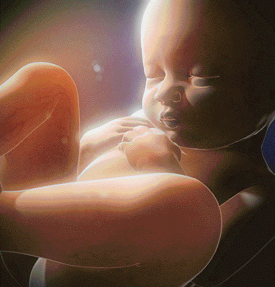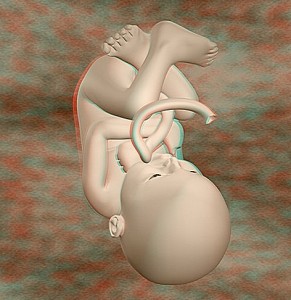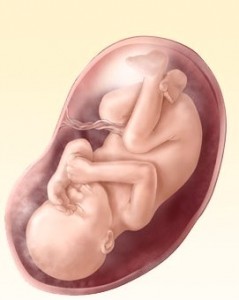38 weeks pregnancy is the phase of the last few weeks of pregnancy. In this stage, the Braxton Hicks contraction recur with intense regularity. Here are pregnancy week by week pictures
38 weeks pregnant, what to expect
Though there may be those leg cramps and backaches, they are overshadowed by the general glow in the woman’s face about the baby’s arrival. The cervix is getting ready for delivery. Due to the thinning of the cervical lining, there may be translucent to white vaginal discharge, sometimes coated with blood.
Signs of labor in 38 weeks pregnancy
Labor in movies has been shown as a quick thing, where a pregnant woman shouts that she is getting the pain and she is rushed to the hospital; the next thing you know she has delivered a baby. But in real life, labor is more of a course than a sporadic event.
There are three phases to labor-the first phase (latent), the second phase (active) and the third phase (transitional).
The first latent phase of labor
This first phase of labor can last anywhere between a few hours and a few days but the woman will experience brief and controllable contractions. The cervix can become thin and open to about 3 centimeters, due to these continual contractions. Your will be able to do your normal work, your gynecologist may ask you to keep a record of the number of contractions that you get in an hour.
Do you call the doctor when you are in the first phase of labor? Yes, under two conditions, when the contractions become intense and come quickly which means you are entering the second phase of labor; and when the water breaks. Also, your doctor may have you checked for group B strep virus, which can be harmful if not treated. If you have tested posiive, the doctor may give you a few antibiotics.
Second phase of labor
During the second or ‘active’ phase of labor, the contracts become more intense and regular. In the first phase, the labor contractions may have been minutes apart, but in this, they can come quickly in 3 to 4 minutes and last for thirty seconds. The pain is not dull anymore, though the contractions start normally, then can turn into intense pain before settling. The second phase lasts only for a few hours instead of days.
Once the second phase labor contractions become very intense and regular, you should let the doctor know. The gynecologist will now ask questions about contractions so that she can understand if it is the time to take you to the maternity clinic or if it is just the first phase of labor.
The cervix extends with every contraction. The wall becomes thin, so slim that it makes it easy for the baby to come down. The water may either break by itself or the doctor might do it for you so that the labor process can be quickened. The doctor may monitor your and the baby’s heart-rate. You will also be advised on breathing techniques, get pain medications and may be administered with IV fluids . . Towards the end of this phase, you will find that the cervix has either dilated or opened to four to seven centimeters.
Third phase-Labor and Delivery
The third phase of labor called the transition phase beause this is when you are ready to deliver the baby. The contractions are at the peak here. As far as coping with the pain is concerned, you may be taught breathing techniques, pain relieving medication etc. The cervix extends from 7 to 10 centimeters and the baby is able to get a wide enough opening to pass through.
Though at this stage, you have the urge to push; you should not do till your gynecologist or doctor tells you thatit is the time for you do so. If the cervix is not dilated according to the requirement, then pushing the baby down can to the disadvantage of the woman in labor, because it can cause engorgement and delay the labor.
Delivery phase in labor: Now that the cervix is properly and totally dilated, the doctor will ask you to push. The doctor, the nurse and the doula will help you in pushing the baby out of the cervical opening, out of your body and into the loving arms of the mother.
Differerence between Cesearean birth and vaginal birth
If the labor is not happening properly impending the birth, the doctor will advise the family to go for a Cesarean section birth. It is observed by experience of doctors across the world hat 75 percent of Cesearan births and delivery happens because the labor is not happening normally. The recovery time in a Cesarean birth is longer than vaginal birth. One should be careful not to put any weight on the stomach area; do not even put the baby on the abdomen. You may have to nurse lying down instead of sitting so as to ensure that there is no pressure on the incision which can take time to heal.
38 weeks pregnant Pictures
38 weeks of pregnancy How much does the baby weigh?
The baby is all set to enter the world! The internal organs and systems have developed totally and the baby finds the once comfortable uterus small enough, for her little arms and legs. The baby weighs about 6 to 7pounds, 14 ounces and is about 19.7 inches long from head to heel. The fetal age is 36 weeks, the body fat of the baby builds up, it is putting on 29 grams a day. The wrinkled skin become smooth and supply.
The baby has a full mop of hair now, an inch or so long but some babies have peach fuzz. The soft downy lanugo that covered the baby for weeks is swallowed by the baby and gets accumulated in the bowels. This is the baby’s firt bowel movement in the form of black color, also known as meconium. At the 38th week, the woman has not really gained weight, it remains between 26 and 35. 5 pounds. You have reached the end of your pregnancy, the baby is due any moment. Congratulations!



